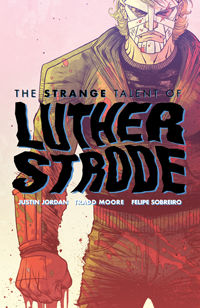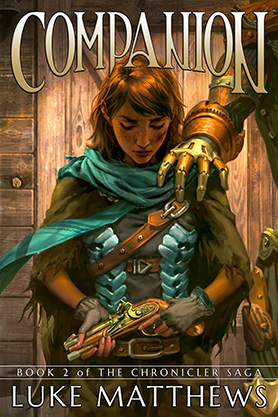We’ve all been there: The seedy, low-rent comic shop that looks like the bastard love-child of a hoarder’s garage sale and a disaster site. Comics, toys, games, and t-shirts are haphazardly arranged in no discernible organizational style. Back issue boxes are virtually inaccessible, covered in random detritus. Aisles are so narrow and crammed with so much flotsam that the slightest mistake could lead to a Wall-E style garbage heap collapse. And, to top it all off, the guy behind the counter can’t be bothered to look up from his copy of Beyond Wonderland long enough to answer a simple “Do you guys have the latest issue of The Sixth Gun?”
Local comic book shops are an interesting breed of retail establishment. In an industry that thrives on repeat customers driven by intense fandom, a successful comic shop must toe the line between catering to the hardcore fanbase and serving new potential customers without scaring them away. It’s a tough tightrope to walk, but success can be accomplished with proper attention to the right details.
In this entry, we’ll discuss a problem that can lead to many others: Ordering Blunders.
It’s hard to fault a store for their ordering practices. Comic shop owners drift in a murky space between savvy, organized businesspeople and tea-leaf-reading basement psychics. I don’t mean this in a derisive way – this is simply to say that not all ordering decision are, or even can be, based on hard numbers in the comic book industry. Many decisions are based on gut feelings and knee-jerk predictions. Comic fans are flighty, and can cause streaky waves in popularity. One month a book may languish in obscurity without so much as a second glance by a customer, while the next month’s issue will fly off the shelves and create a demand for back issues. These kinds of natural fluctuations in the tastes of comic shop customers are difficult to predict, and even harder to adjust to in any kind of timely fashion.
Every comic shop owner has made an ordering mistake at some point. Maybe they over ordered expecting a surge that didn’t come, or they didn’t understand that because Mars was in equinox and Sagittarius was in arabesque behind Orion, there would be a sudden influx of customers asking desperately for the latest issue of Executive Assistant Iris. In spite of this, there are two major ordering blunders that aren’t about market fluctuations or finicky customers, and rest entirely on the shoulders of the shop owner’s stubbornness. The first of these issues is
Taste-Based Ordering
This is an issue that generally only occurs at the much smaller, single-owner-operator type shops. The bigger stores with bigger customer bases usually have a handle on what readers want, and will also have a staff of employees able to help determine what is popular. The little guys, though, don’t always have the greatest grasp of what their shoppers want, and so are more apt to foist their own tastes onto their patrons.
One store I visited recently (which I will refer to henceforth as our Villain, because I’ll likely talk about them frequently) had well over 30 copies of the then-latest issue of Sweet Tooth on their shelf, but when I asked about current and back issues of Uncanny X-Force, the response I received (and I’m paraphrasing a little because of my rotten memory) was “I didn’t really order much of that ‘cause I didn’t think much of it.” When I went back to their current issue racks, I saw that there were stacks upon stacks of unsold back issues of Sweet Tooth cluttering up the shelf.
Now, I’m not impugning Sweet Tooth in any way: It’s an excellent book and one that I wholeheartedly suggest you check out. And I could be talking out my ass here, but I don’t think it’s a runaway blockbuster that’s going to churn 30 copies – in addition to subscribers – for a hole-in-the-wall comic shop. I mean, it clearly wasn’t doing so for our Villain. On top of all that, Uncanny X-Force is a consistently excellent book from the largest publisher in the world, that has name recognition with the legions of X-Fans in our little community.
Yet, it wasn’t ordered because the shop owner “didn’t think much of it”. Not to be rude, but it frankly doesn’t matter what the shop owner thinks of a book – it matters what the customers think. Pay attention to trends. Listen to what people are asking for. Promoting a book that you like is never a problem, but do it right; Don’t just dump a huge pile onto your racks and expect them to fly off the shelves. Most of all, make sure that you have the popular stuff on the shelf, not just in subscribers’ boxes, for walk in customers.
This leads me into the second blunder:
Severe and Consistent Under-Ordering
Although this doesn’t happen too often for box customers at their own regular shop, how many times have you walked into another shop and asked for a book, only to find out that the owner only ordered enough for his subscription boxes? This is acceptable and excusable once or twice, or maybe for a few of the more clearly obscure titles, and almost never happens with blockbuster titles like Ulitmate Comics Spider-Man or The Walking Dead.
But I’ve been to shops where I was unable to find a copy of popular and exceptional independent titles – The Unwritten and Irredeemable come immediately to mind – because they only ordered enough for their subscription boxes and no more. None. Not even one, that they could have told me had already sold. And not just once or twice, but on a consistent, month-to-month basis. Once, after finding out that a shop I’d visited (our Villain once again, oddly enough) didn’t have the latest issue of The Sixth Gun, I asked how many of their box customers received the book, to which the owner replied “19 or 20”.
19 or 20!? Wait just a minute! You have subscribers in the double digits ordering this book, and you didn’t think that it would generate enough popularity – or, hell, even recommendations – to warrant even a few shelf copies? The absurdity of this scenario makes my head spin, and I’ve encountered similar situations multiple times over the years.
If I am continually walking out of your store having not found the comic I’m looking for, what reason do I have to return? I get quickly fatigued by the phrase “we can order it for you if you want”. That’s not why I’m here! If I wanted to wait for shipping, I’d have ordered it on the ‘net my own damn self. If I can consistently return to a shop and find the things I want, I’ll be infinitely more likely to start a subscription shelf there. Which, incidentally, is exactly what happened with my current shop.
You’re Not A Collector
I understand that there are perfectly reasonable explanations for these issues on a case-by-case basis, and I also understand that shop owners aren’t perfect. However, you can’t just throw your personal collection into a space and call it a comic shop. You’re not a collector when you’re at your store, and you’re not just recommending books to your friends. There’s a business to run and customers to serve whose tastes and flighty buying habits will vary wildly both from yours and from each others.
Don’t expect your customer base to have the same taste in books as you, and don’t cater so heavily to your subscribers that you forget the whole reason why you have new issue racks in the first place: potential new buyers that will allow you to expand your business.








